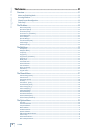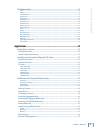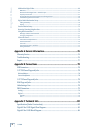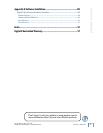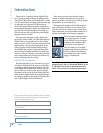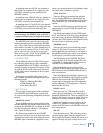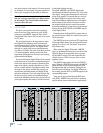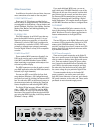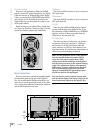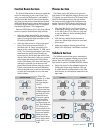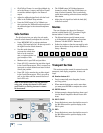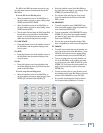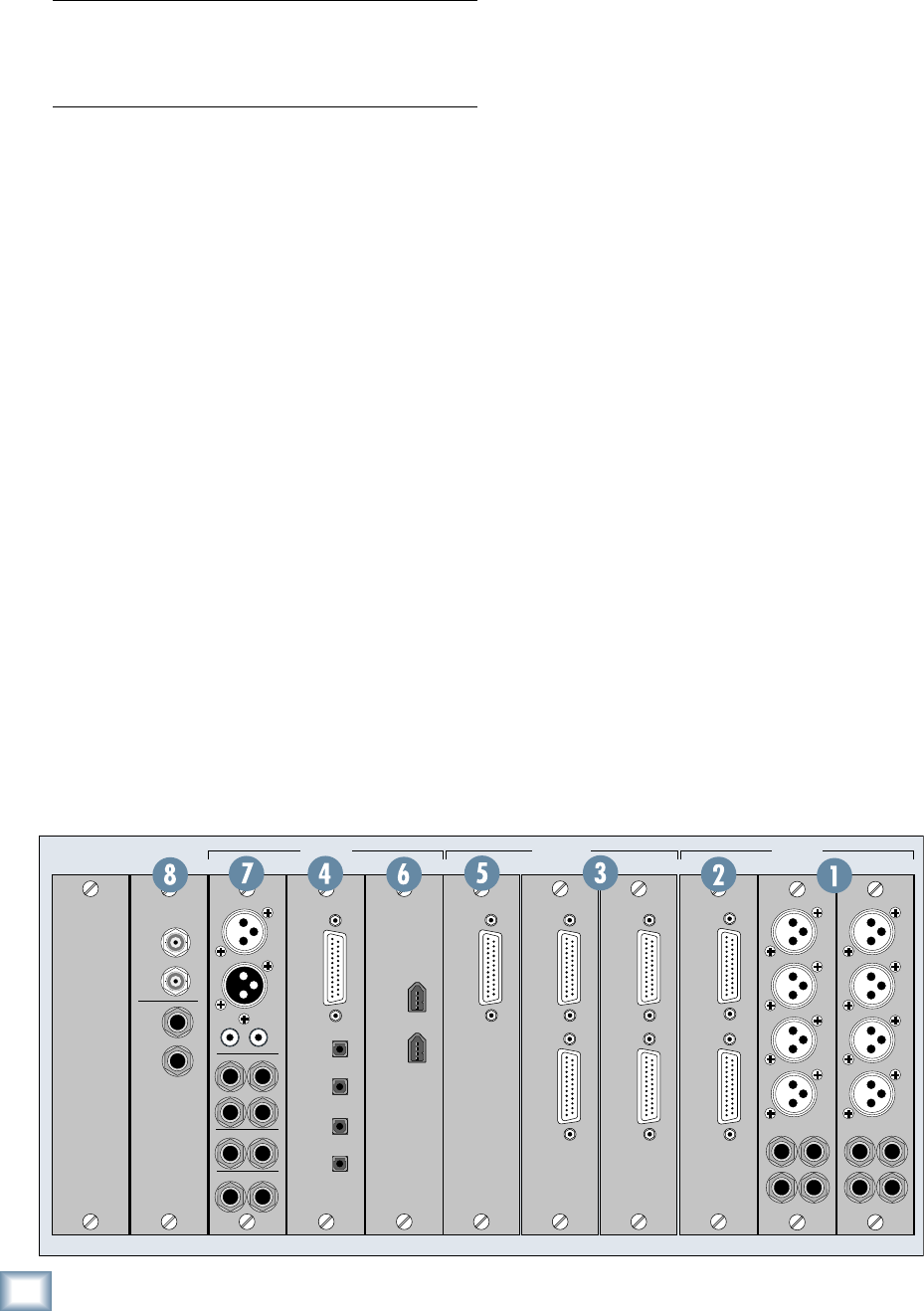
12
X.200
Digital X Bus
nect these outputs to the inputs of a 2-track recorder
for mixdown, or to the inputs of a power amplifi er to
drive a pair of speakers for the studio or whatever.
Note: Remember that the level for the Main L/R
Mix Out is always controlled by the Master Fader
on the console. The Control Room volume knob
does not affect this level.
8. SYNC CARD
The Sync card provides word clock synchroni-
zation in and out of the console on a pair of BNC
connectors, and SMPTE time code (also called
Longitudinal Time Code or LTC) in and out on a pair
of 1/4" jacks.
The word clock input is the only means to slave
the Digital X Bus sampling clock to an external
clock reference device, such as a “house sync” box
or a clock distribution system. The Digital X Bus
can lock to a word clock source running between
44.1 kHz to 192 kHz. The word clock input provides
a 75 ohm termination, which prevents the clock
signal from feeding back to the source and causing
synchronization problems.
If you are slaving the Digital X Bus off an external
word clock source, we do not recommend using the
word clock output of the console to distribute that
same clock signal to another digital device. There
will be a certain amount of propogation delay from
the input to the output, and this may cause a syn-
chronization problem between your Digital X Bus
and other equipment. If you are using multiple digi-
tal devices in your studio, we recommend using a
word clock distribution device that can send a word
clock signal equally and evenly to all slave devices.
A note about clocking and sync:
The ADAT, AES/EBU, and SPDIF digital audio
specifi cations include the presence of a “clock refer-
ence signal” through the same physical connection
as the audio signals. This means that you can use
the Digital X Bus as a master clock source, and
lock several different digital devices to the digital
audio outputs of the console. You need to refer to
the external digital devices’ product documenta-
tion and/or manual(s) to learn how to lock external
devices off the ADAT, SPDIF, or AES/EBU outputs
of the Digital X Bus.
Remember that the Digital X Bus cannot slave to
any external source unless it is locked via the word
clock connection.
The SMPTE input can receive an LTC signal from
24 through 30fps (frames per second) and includes
support for “pull up” and “pull down” drop & non-
drop frames rates.
When using the Digital X Bus with a SMPTE
input, we recommend locking the word clock of the
Digital X Bus to the same source that is generat-
ing the SMPTE output. This will ensure that the
console does not “drift” from your video or other
playback source.
The SMPTE output simply mirrors the SMPTE
input. Without a SMPTE input present, the SMPTE
output will not be active. Even though the Clock
Settings window has an “Internal” setting for the
time code source selection, the Digital X Bus does
not actually generate MTC or SMPTE signals at the
corresponding outputs.
Time code is also provided through MIDI time
code (MTC). SMPTE time code is more commonly
used in motion picture and broadcast applications.
WORD
CLOCK
SYNC CARD
IN
OUT
IN
OUT
SMPTE
A
B
MIX OUT CARD
SPDIF
SPEAKERS
PHONES
MIX OUT
IN
OUT
IN
LR
12
LR
LR
OUT
AES/EBU
FIRE CARDDIGITAL CARD
OPTICAL
TDIF
I/O
IN A
IN B
OUT A
OUT B
MIC/LINE 4 CARD
5
7
6
8
1
2
3
4
MIC/LINE 4 CARD
5
7
6
8
1
2
3
4
MIC/LINE 8 CARD
IN
OUT
I/O
AES CARD
OUT
IN
LINE CARD
OUT
LINE CARD
IN
SYNC C • SLOTSD • SLOT B • SLOTS A • SLOTS



